Furnas is a volcano. It last erupted in 1630. There are two calderas. One is just 6km wide. The older one is undetermined because the caldera overlaps that of another volcano on the island just east of Furnas. The area is still very active, but mostly in the form of hot springs and volcanic gasses. The town is at risk of earthquakes, rock slides, and flooding. Lagoa do Furnas (the lake) is 500m higher than the village! The last major noteworthy earthquake was in 1952.
When I first arrived on the island of Sao Miguel, I visited the Town of Furnas as part of a guided tour. At that time, we walked through the Botanical Gardens there and were given one hour to enjoy the hot spring. I loved it.
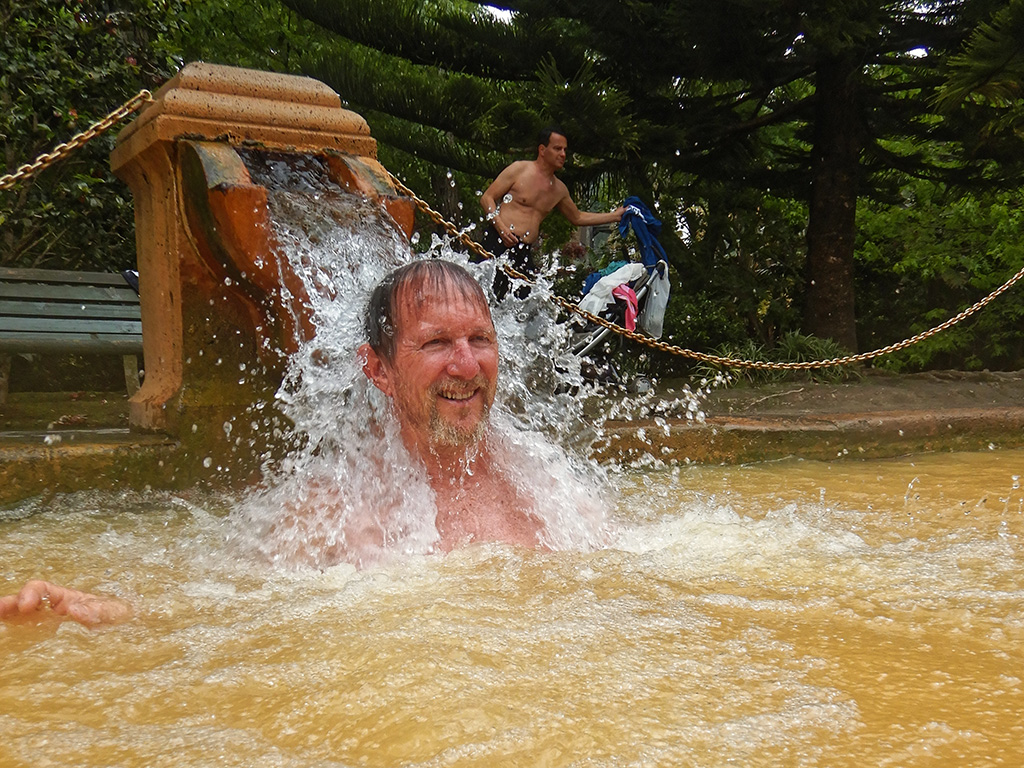
Kevin Enjoying the Hot Spring In Furnas’ Botanical Garden
Since then, I learned there was another hot spring. One with five smaller, separate pools. So, this week I re-visited Furnas.
I got up early and prepared. To catch the bus, I had to walk to the end of the harbor. I didn’t know how much it would cost. I was told that you tell the driver where you want to get off and he will tell you the price. It was 4 euros and 55 cents for the 50-minute bus ride.
Lagoa do Furnas – Front Side Hike
The bus stops at all the main towns and villages along the way. I got off at Furnas Lake, one stop before the village. The first thing a saw along the lake was this Neo-Gothic Church. What a way to start the hike! I hiked halfway around the lake, although most of this section was alongside the road.
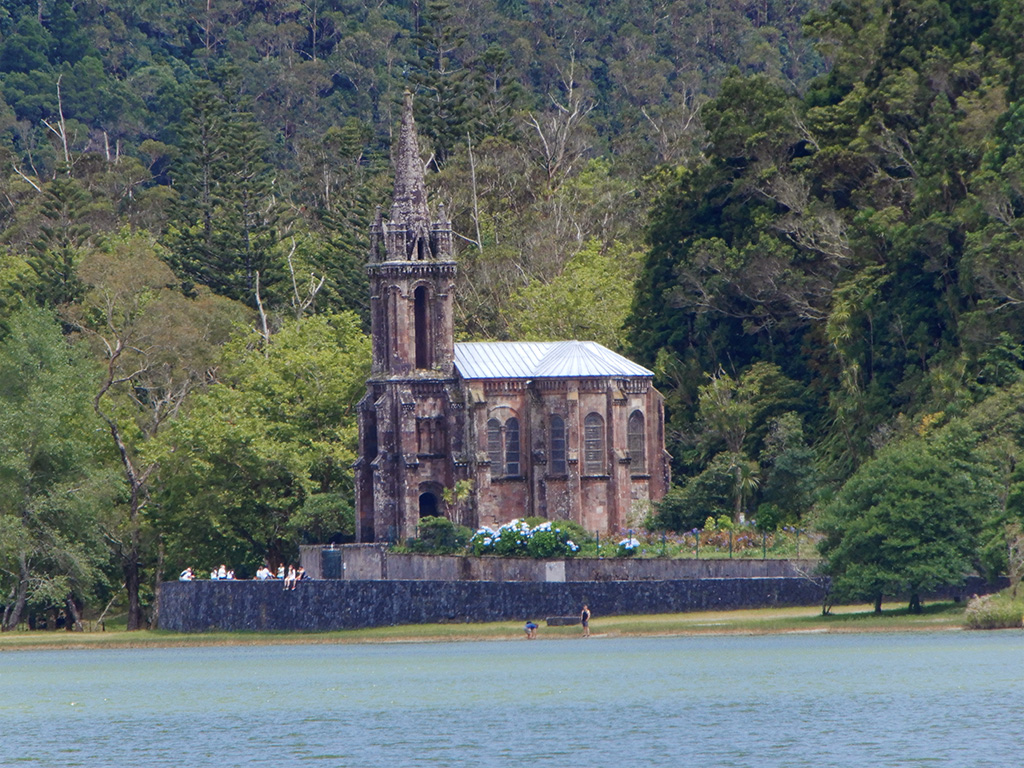
Nossa Senhora Das Victorias Church
I hiked almost halfway around the lake. Once I reached the road into town, I saw the old bus stop. It was adorned with a tile mosaic indicating this is the Parish of Furnas. I followed the road into Furnas.
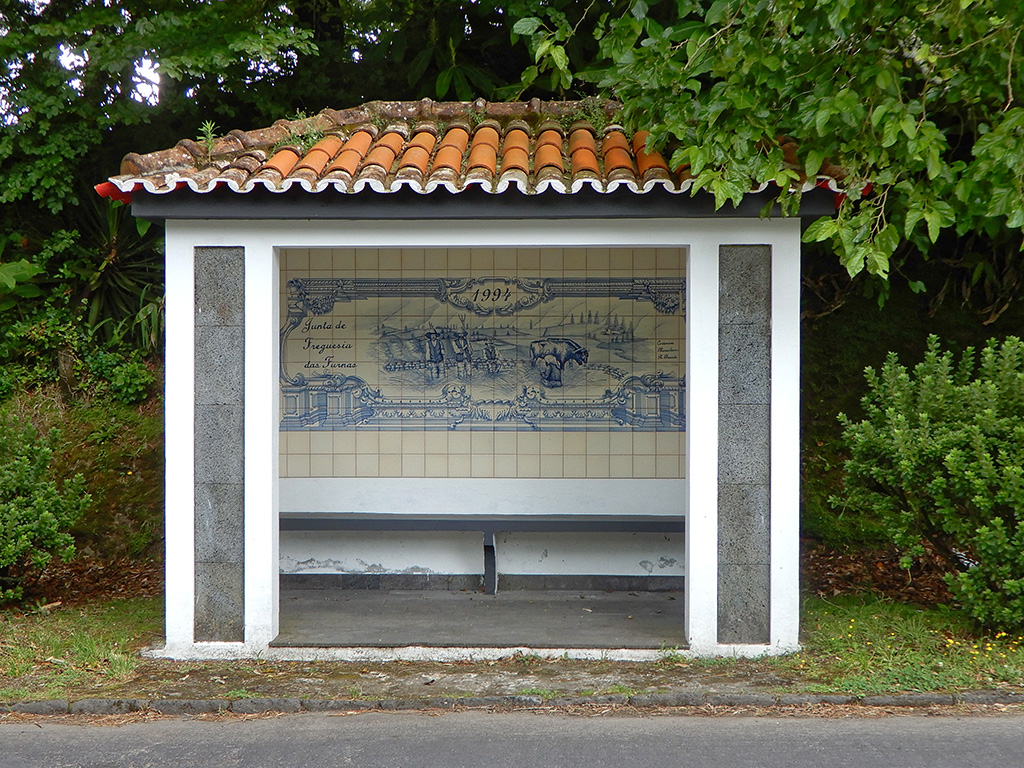
Bus Stop (not currently used) At the Road Into Furnas.
The Village
I followed the road into Furnas. It was about a mile long. The road was lined with Hydrangeas like many roads in the mountains. Hydrangeas are not native to the Azores. It is believed they arrived from Japan in the 19th century. From the Azores, Hydrangeas made their way to North America with Azorean immigrants.
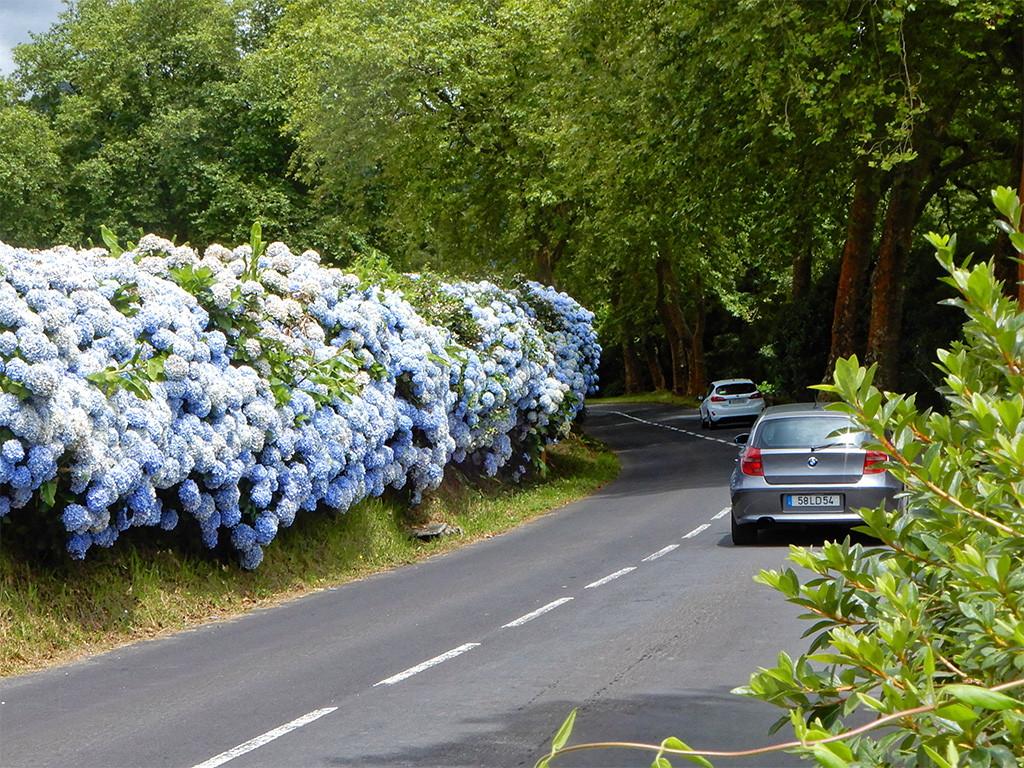
Hydrangeas Lining the Road
My plan was to ask some locals where the hot springs were. Much of the walk was downhill… steep downhill. Steep enough so my ankles were getting sore and I had to step carefully… and I was walking on the road!

Furnas Church From a Distance
Once I reached the village I did not see anyone right away. So, I continued downhill, although it was far less steep now.
Poça da Dona Beija Hot Spring
At the bottom of the hill, There were several small groups of people. I had reached Poça da Dona Beija, the hot springs I was looking for. While in line, I was corrected. These were not hot springs, but hot pools. The source of the hot water is a hot spring from a cave farther upstream.
After paying a very small entry fee and locker fee, I was greeted by this view.
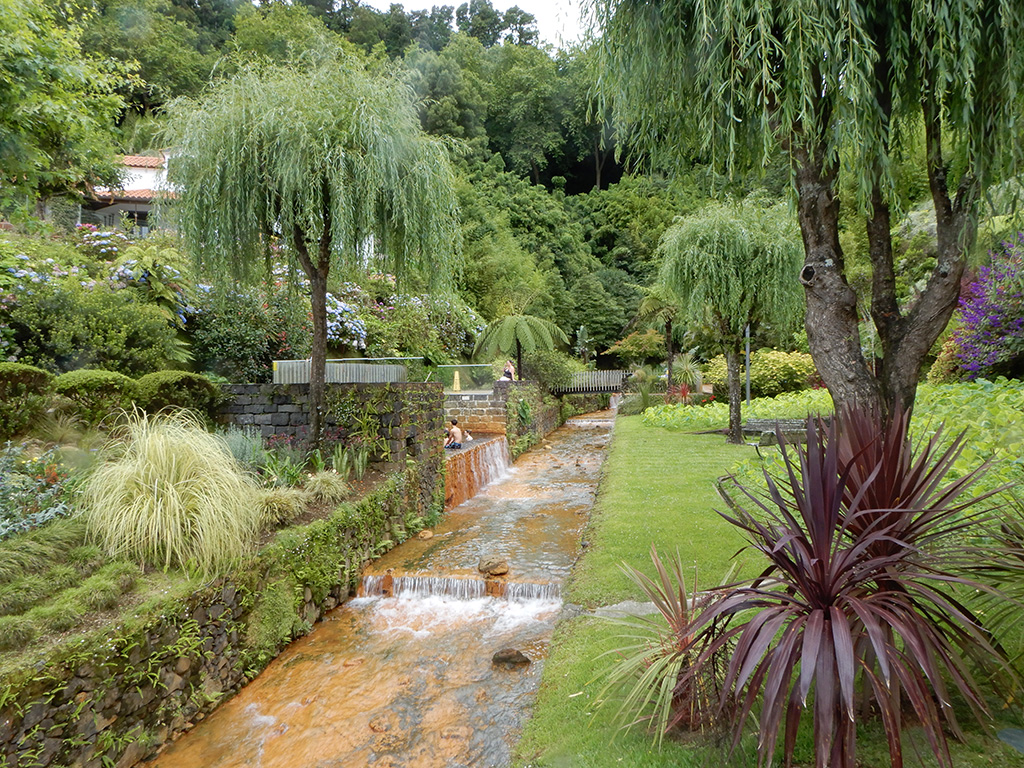
Poça da Dona Beija
There are five pools, four of which are 39 C The pool farthest upstream is above the source of the hot water. So, it is a cool 28 C. Believe me… when you’ve been in 39C water, that upper fool is refreshing.

Kevin Relaxing in the Hot Pool
After almost an hour and a half relaxing, moving from pool to pool, I went to the cafe’ that overlooks Poça da Dona Beija for lunch.
After paying for my lunch and getting ready to head back to the lake, I asked the waitress for the best way to walk to the lake. I was hoping not to walk up the hill I had come down earlier. She gave me directions. I was happy. It was a different direction and a walking trail back to the main road that leads to the lake.
Then I saw the path had a sign… Google translated it for me. “No Cars, Trucks, or Four-wheelers allowed! Passage for foot traffic and Dirt Bike Motorcycles Only!” About a hundred yards further I found out why! My walk into town was not the steep section! My legs were burning when I reached the top!
She was right though! It was a walking path and shortcut. In about the length of two football fields, I went from the village to the main road; straight up the mountain!
Walking to the village, there was not much of a view. This way, however… What a view! I could see the whole village below and the volcano caldera in the distance. Yes, they built a village inside a volcano!
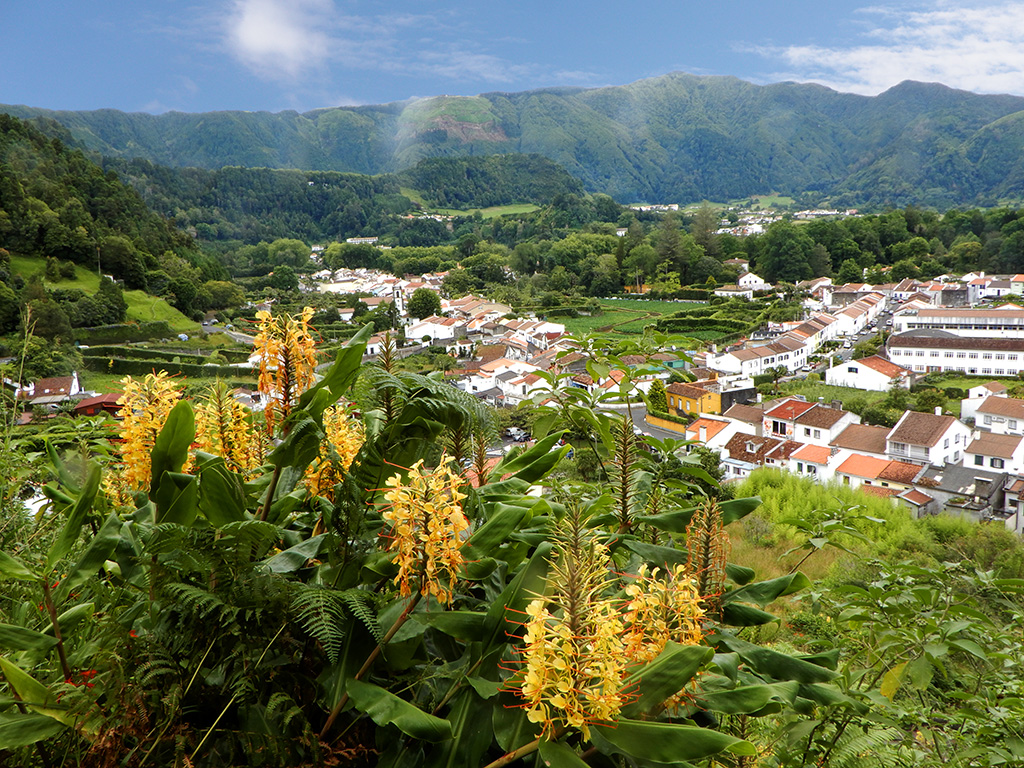
View of Furnas from the Main Road
Volcanic Activity
Once I was back at the bus stop, I continued my walk around the lake. Walking along the shore of Lagoa do Furnas (the lake), the volcanic activity can’t be missed. Much of the eastern shore has volcanic gasses bubbling to the surface. The smell of sulfur is evident, even pungent at times.
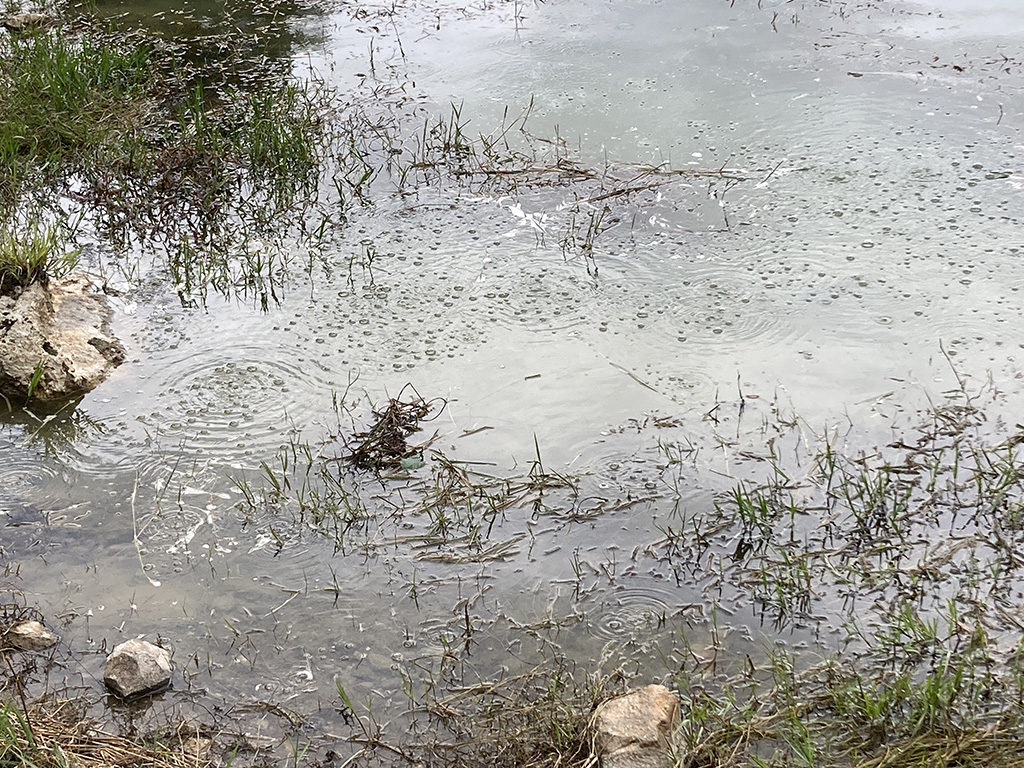
Volcanic Gasses Bubbling to the Surface
Next stop… where they use the heat from the volcanic activity to cook a true Azorian meal… Beef, Pork, Chicken, sausage, carrots, potatoes, something else that looks like a potato but sweeter, sweet potatoes, and a ton more vegetables. I did eat this on my first visit during the guided tour. It was fabulous!
In the photo below, the round hole is where they would place a cooking pot. The dirt mounds on the right have pots under them. The smoke is steam from water boiling up through the earth… with a bit of sulfur to awaken your senses.
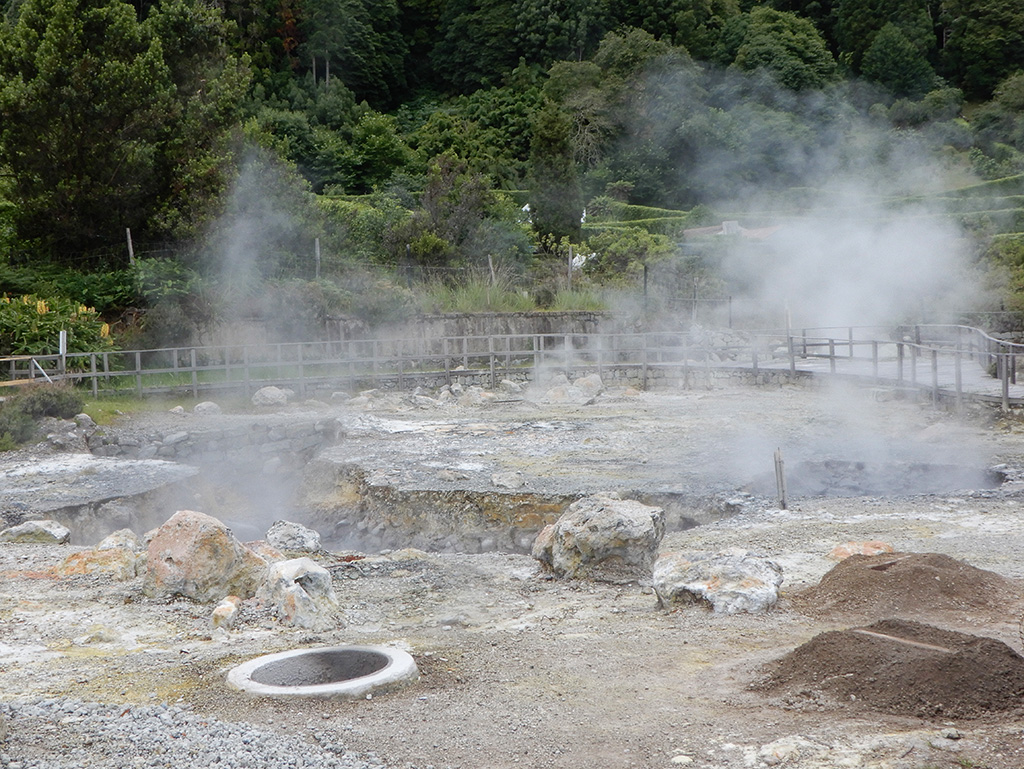
Water Boiling From the Active Volcanic Activity
Lagoa do Furnas – Back Side Hike
The hike around the lake was relatively flat. Most of the I was away from any roads, on a nicely shaded trail. This was great since the sun was scorching my melon. This is the real proof that there is thinning going on up top!
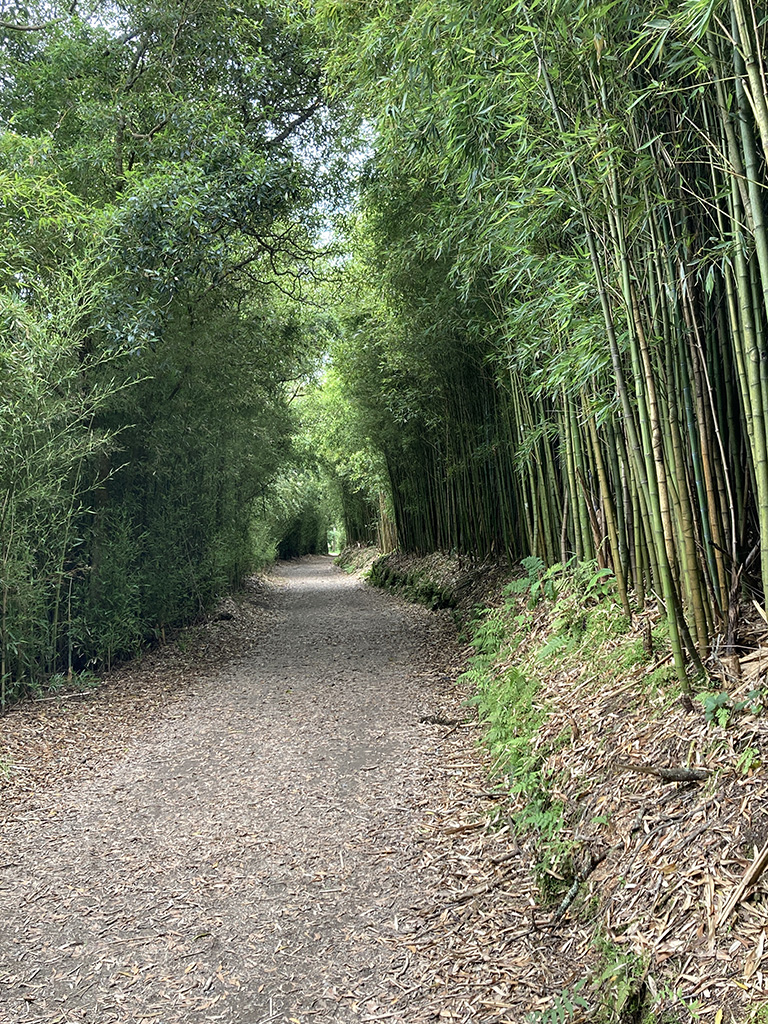
Bamboo Lined This Part of the Trail
At the start of my hike, I was surprised to see the Neo-Gothic church on the shoreline of the lake. Thinking back, most of my research was related to the hot springs and geothermal cooking. So, imagine my surprise when I came across this rope course! I had no idea it was there.
You can see workmen in the background who were maintaining and enhancing the course. Their presence shows the scale of this course. It was huge!
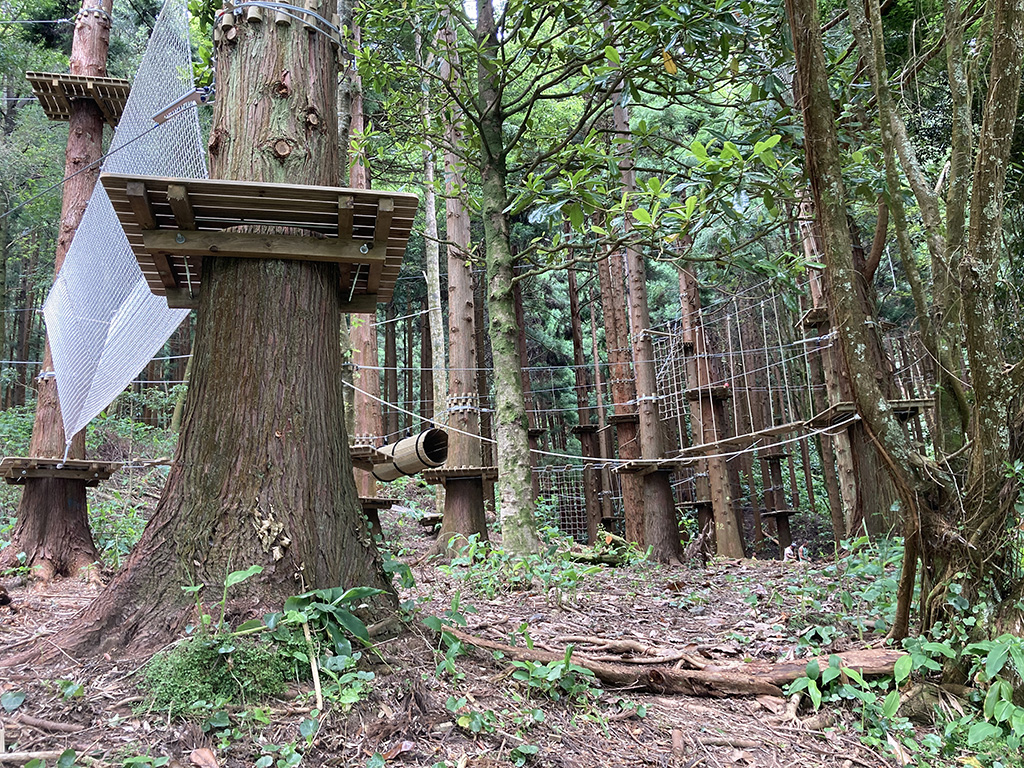
Rope Course
All together, I walked over 20,000 steps covering 8 miles, and climbing the equivalent of 54 flights of stairs. It sounds impressive, but I have no idea what any of that really means. I usually struggle to get over 8,000 steps on a busy day. So, more than double seems like a lot … at least for me.
All I know is my legs were screaming at me by the time I got back to the boat, and I slept like a log that night!

The meal cooked from the hot springs was the highlight of our trip to Sao Miguel but now I wish we had taken time for the hot pools. Hope you are getting your shaft repaired soon and can move on to Scotland. You are not missing anything here in the Chesapeake — it is very hot and rainy. Keep up the blog posts and all the pictures, we love them. Stephanie & Drew of S/V La Vita.